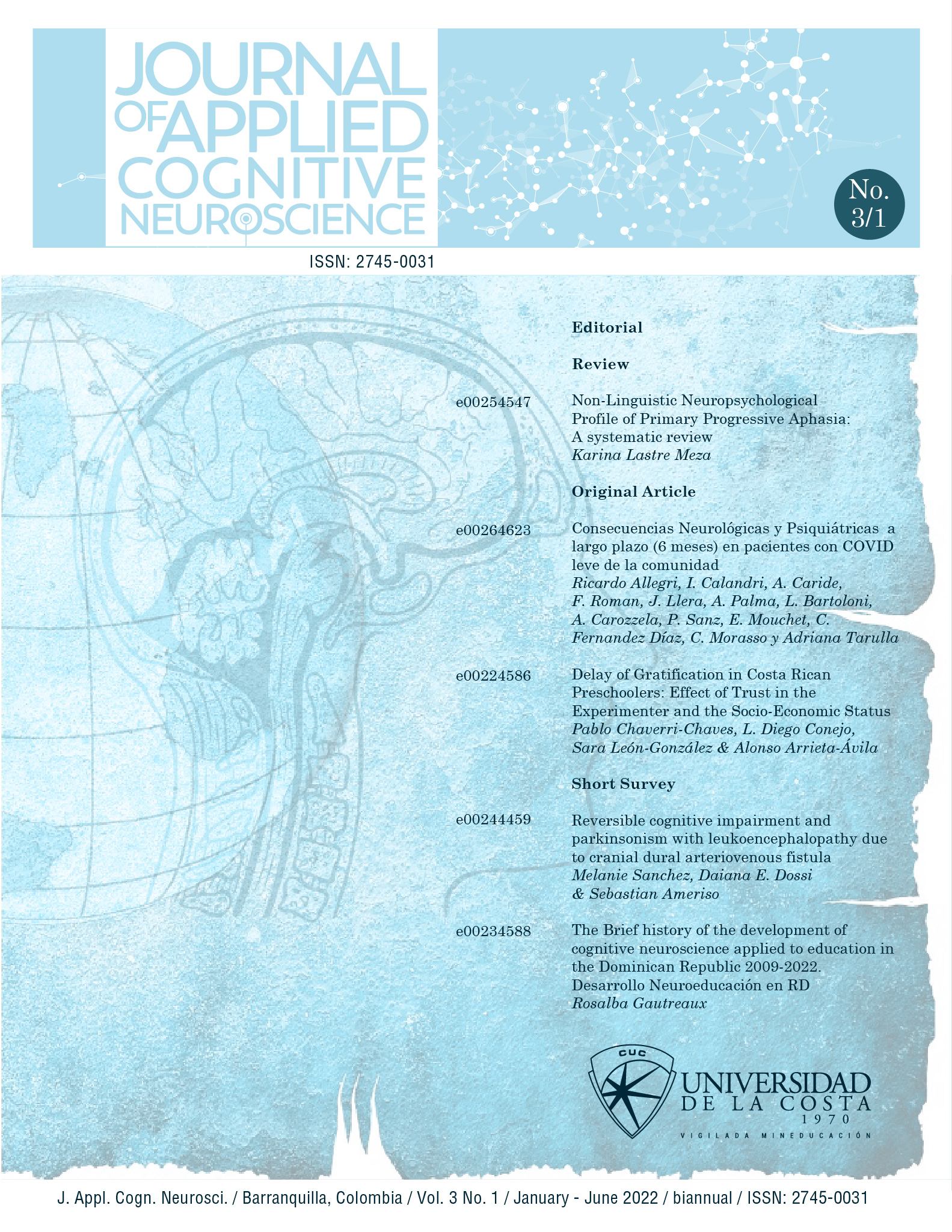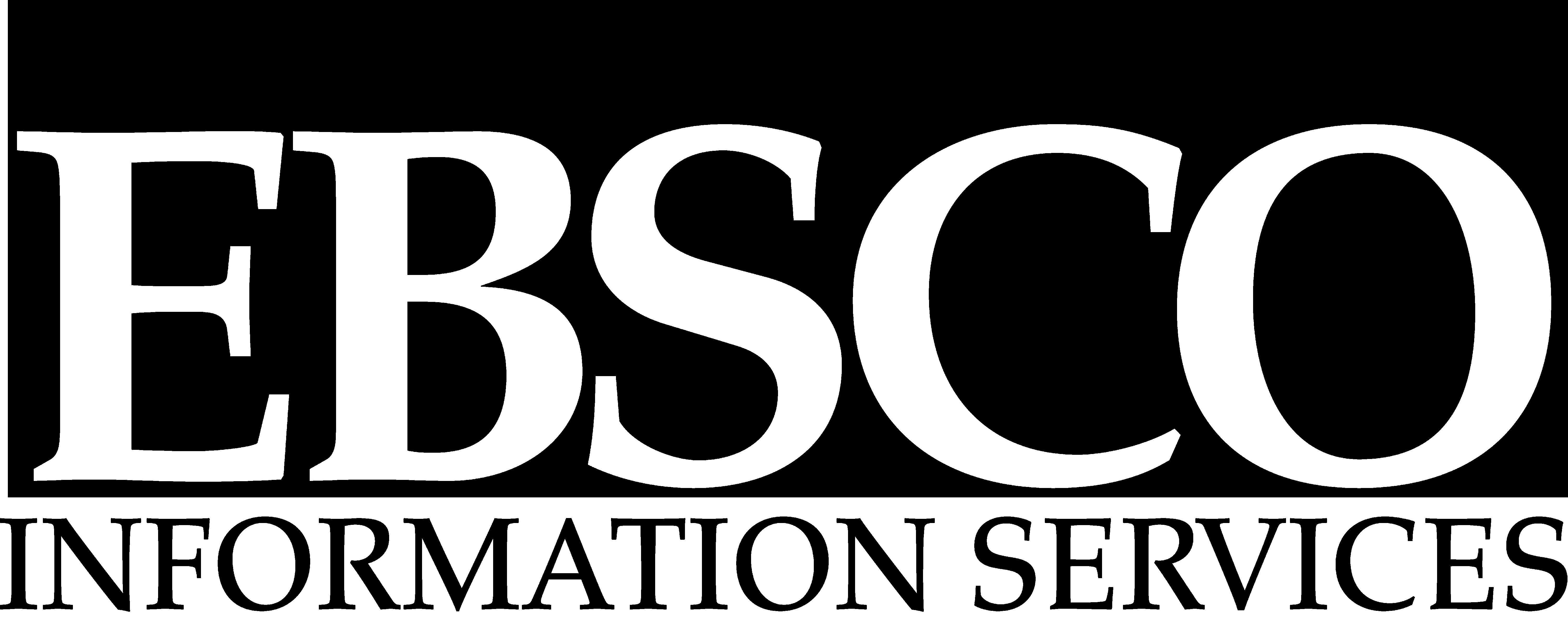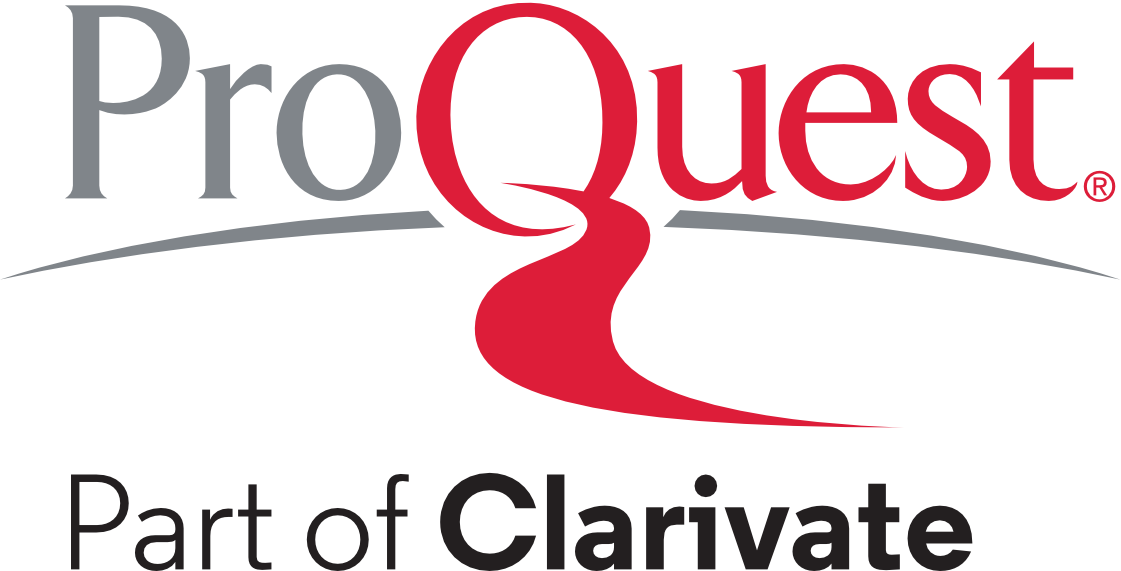Brief history of the development of cognitive neuroscience applied to education in the Dominican Republic 2009-2022
Breve historia del desarrollo de la neurociencia cognitiva aplicada a la educación en la República Dominicana 2009-2022
DOI:
https://doi.org/10.17981/JACN.3.1.2022.06Keywords:
Cognitive Neuroscience, Education, Neuroeducation, NeuroPedagogy, Neuroethics, Emotion, Learning.Abstract
Cognitive Neuroscience Applied to Education has experienced constant development in the Dominican Republic since 2009. The knowledge provided by neuroscience to understand the role of cognitive functions and emotions in learning has revolutionized teachers throughout the country. in an increasing way. However, a creative and innovative vision of education that prioritizes inclusion, respect for diversity, collaboration, social responsibility, critical thinking, and scientific evidence; needs an innovative proposal for teacher training at all levels of the educational system. From 2009 to 2022, not only were crucial topics of Cognitive Neuroscience Applied to Education in the Dominican Republic deepened, but also the levels of dissemination and understanding of the profound need for transformation of the Dominican educational system so that it can respond to the Neuroeducation proposals.
Downloads
References
Alvarado, L. F. (2022, June 12). A new Medical Society on Cognitive Neuroscience emerges. Santo Domingo Dominican Republic.
INAFOCAM. (2022, November 11). Inafocam and IDESIP open diploma course in Cognitive Neuroscience and Pedagogy.
INAFOCAM. (2017, Feb 6). Citizen commitment letter.
http://www.inafocam.edu.do/index.php/sobre-nosotros/quienes-somos
Lozoya, E., Amaya, S. & Lozoya, R. (2018). Cognitive neuroscience in the initial training of Educational Research teachers. Science and Education, 2(3), 11–25.
https://doi.org/10.22206/cyed.2018.v2i3.pp11-25
Mora, F. (2013). Neuroeducation. Publisher Alliance.
OEI. (2015). Congress of Neurosciences Applied to Education.
Pherez, G.; Vargas, S. & Jerez. J. (2018). Neuro learning, an educational proposal: tools to improve the praxis of the teacher. Civilizing Social and Human Sciences, 18(34), 149–166.
https://doi.org/10.22518/usergioa/jour/ccsh/2018.1/a10
Román, F. & Poenitz, V. (2018). Neuroscience Applied to Education: contributions, challenges, and opportunities in Latin America. RELADEI. Latin American Journal of Early Childhood Education, 7(1), 88–93.
https://revistas.usc.ga/index.php/reladei/article/view/5272
Rosario, B. (2022). There is a country in the world. Evocation of Pedro Mir. Universidad Católica Madre y Maestra (UCMM).
The National. (2015, October 21). INAFOCAM says it has trained 1,900 teachers in neuroscience.
https://elnacional.com.do/inafocam-dice-ha-formado-1900-maestros-en-neurociencias/
Published
How to Cite
Issue
Section
License
Copyright (c) 2022 Journal of Applied Cognitive Neuroscience

This work is licensed under a Creative Commons Attribution-NonCommercial-NoDerivatives 4.0 International License.
You are free to:
- Share — copy and redistribute the material in any medium or format.
- The licensor cannot revoke these freedoms as long as you follow the license terms.
Under the following terms:
- Attribution — You must give appropriate credit, provide a link to the license, and indicate if changes were made. You may do so in any reasonable manner, but not in any way that suggests the licensor endorses you or your use.
- NonCommercial — You may not use the material for commercial purposes.
- NoDerivatives — If you remix, transform, or build upon the material, you may not distribute the modified material.
- No additional restrictions — You may not apply legal terms or technological measures that legally restrict others from doing anything the license permits.


 English
English
 Español (España)
Español (España)










